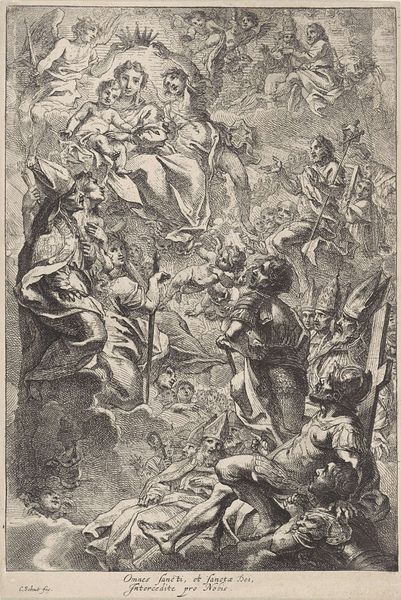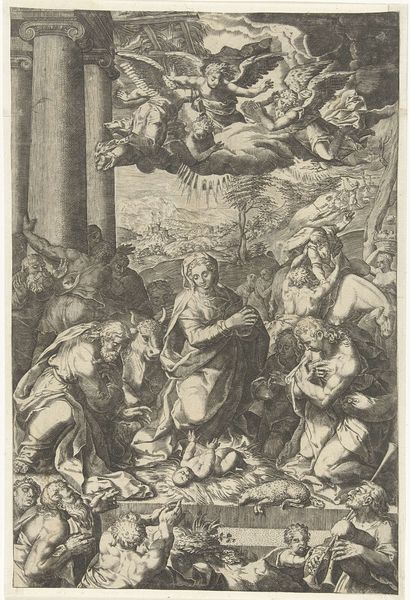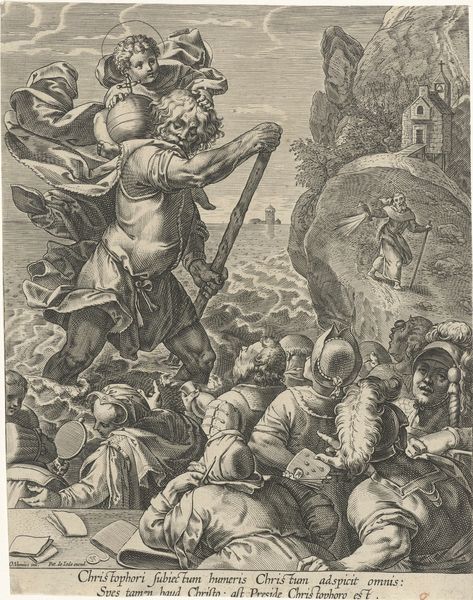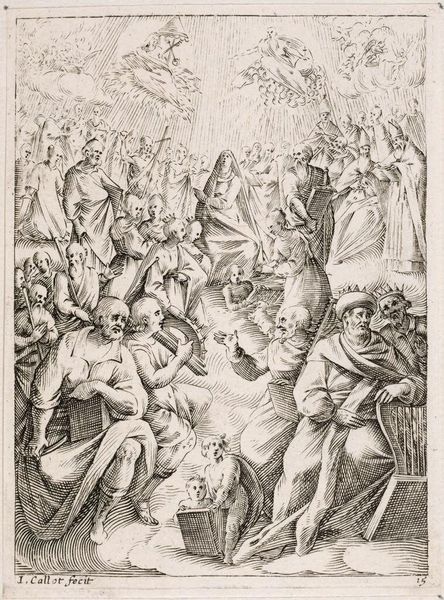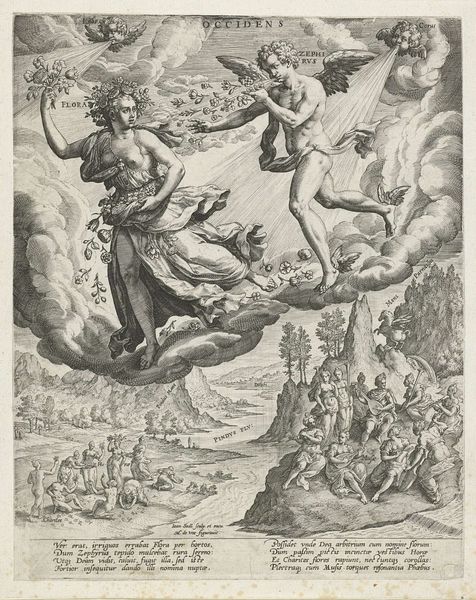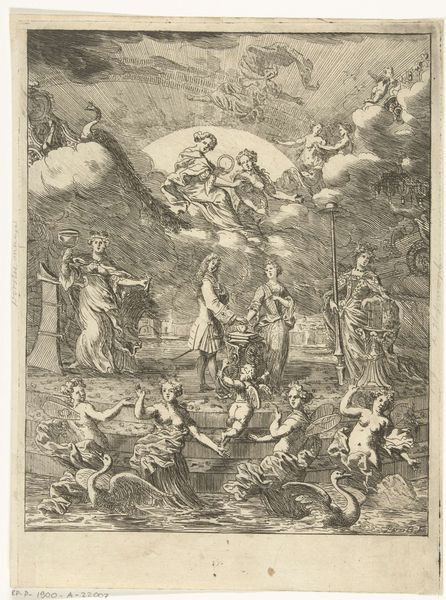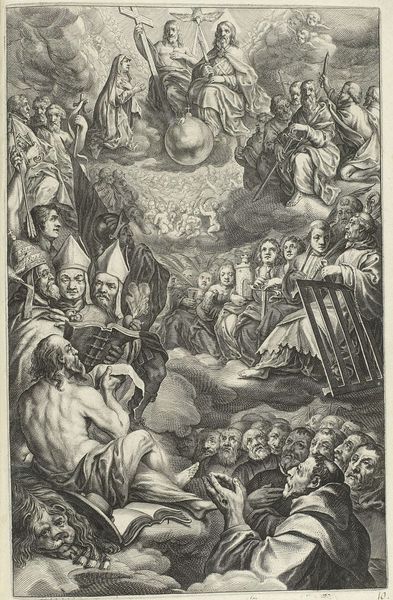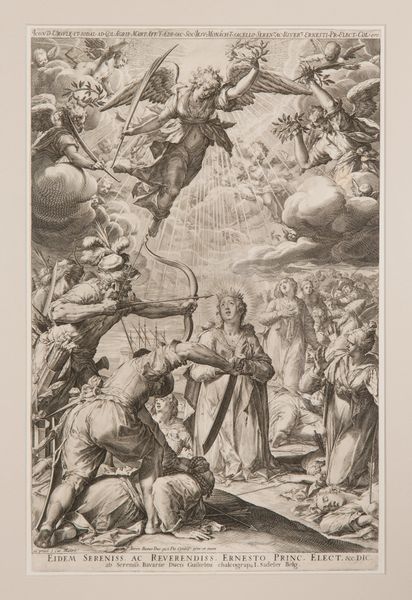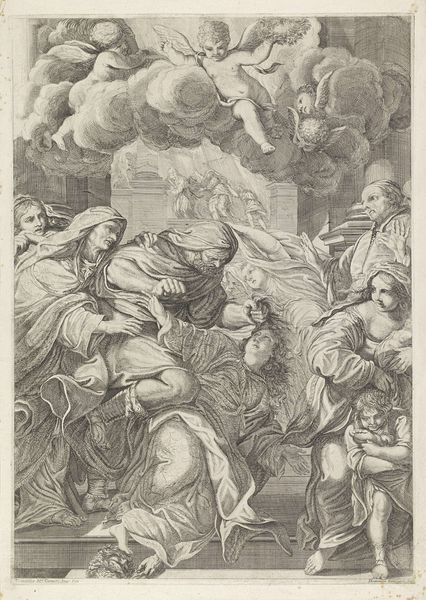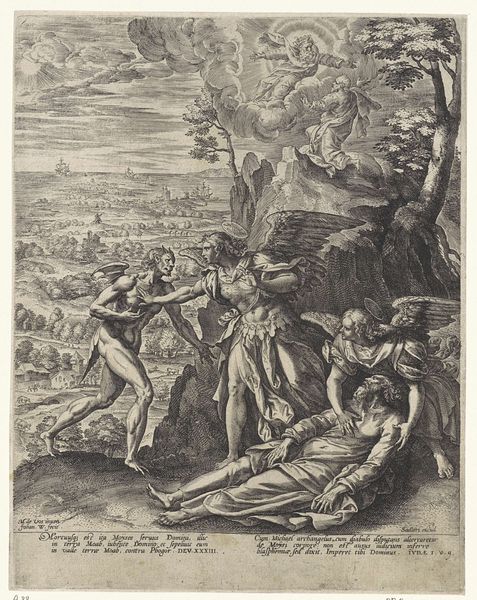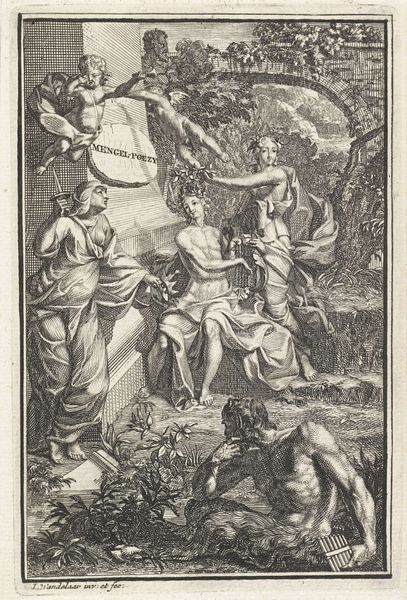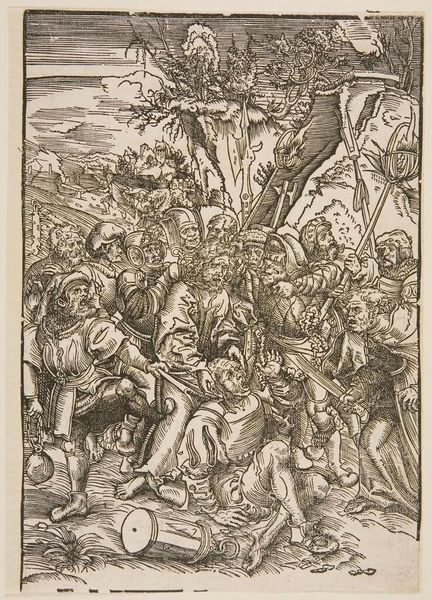
print, engraving
#
narrative-art
#
baroque
#
pen drawing
# print
#
figuration
#
line
#
history-painting
#
engraving
Dimensions: height 382 mm, width 262 mm
Copyright: Rijks Museum: Open Domain
Editor: So, this is Giovanni Battista Bracelli's "Atilla voor de stad Rome," created sometime after 1649. It’s an engraving. The detail is incredible! The hatching gives the figures weight and depth. I'm immediately struck by how much is happening. What’s your take on it? Curator: As a materialist, my initial reaction is to consider the economics of printmaking in 17th-century Rome. Bracelli wasn’t just an artist, but a producer. Each line etched into the copperplate represents labour and a choice, impacting the image's meaning and availability to audiences. Editor: That's interesting. How does thinking about the "labour" involved shift my perception? Curator: Well, engravings like this were often commissioned to circulate specific narratives, to reinforce power. Consider who would consume this image. Was it designed for the elite, reinforcing their beliefs, or was it meant for a broader public, shaping their understanding of history and religious authority? Notice the precise linework emphasizing power of God protecting the city, almost creating a propaganda in black and white. How does that sit with you? Editor: I see what you mean about reinforcing power. Attila is depicted almost…vulnerable. Is it a depiction of divine intervention through a political lens? Curator: Precisely! It connects directly to how material conditions influenced artistic production and interpretation during the Baroque period, and highlights social stratifications by framing access to visual and cultural records. This approach also bridges high art with craft, granting dignity to both activities, in an artistic continuum. Editor: Viewing the piece this way helps understand the convergence of labor, belief, and distribution shaping both artistic intent and reception in history. Curator: Yes. It's about examining what that distribution achieves. What meaning does mass production contribute?
Comments
No comments
Be the first to comment and join the conversation on the ultimate creative platform.
